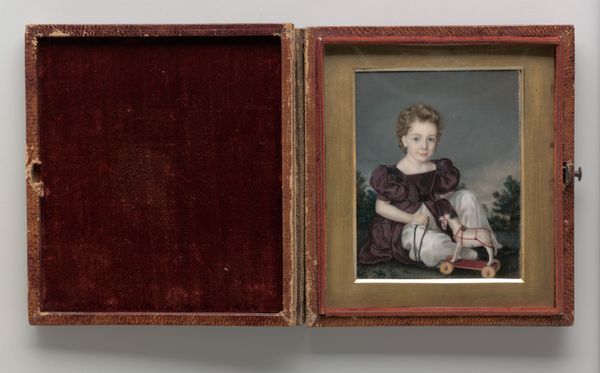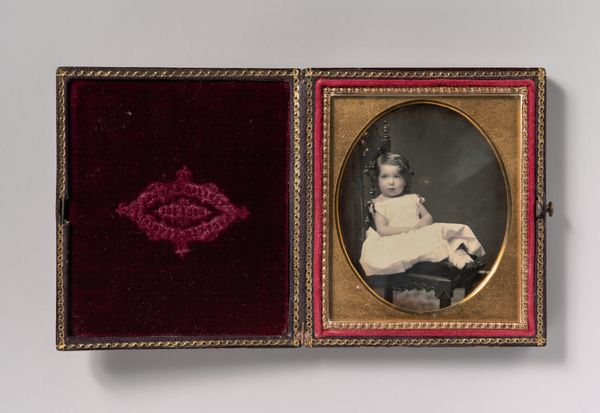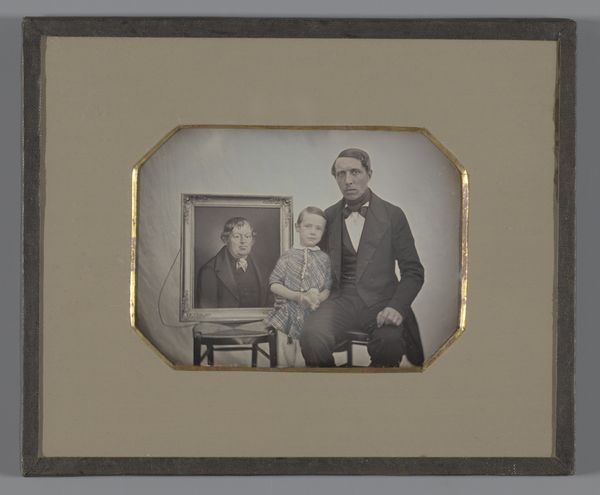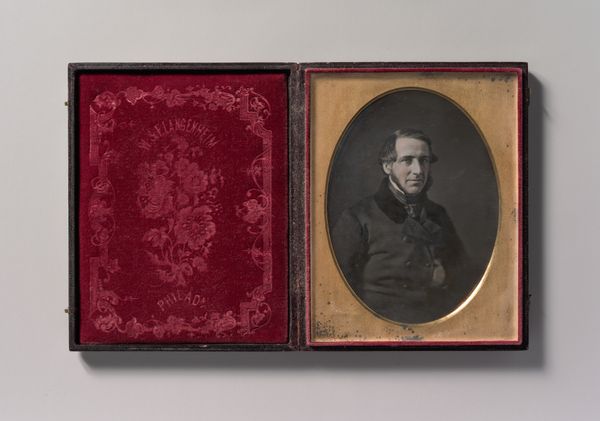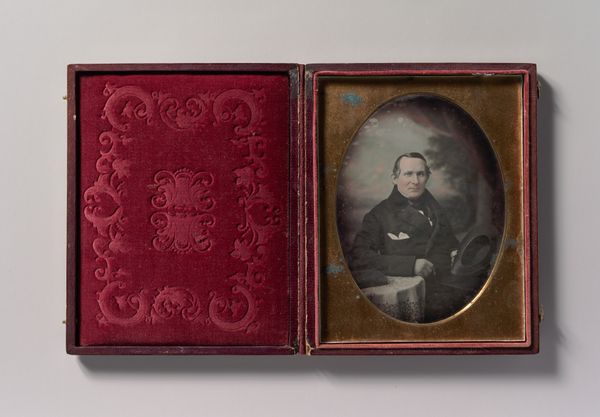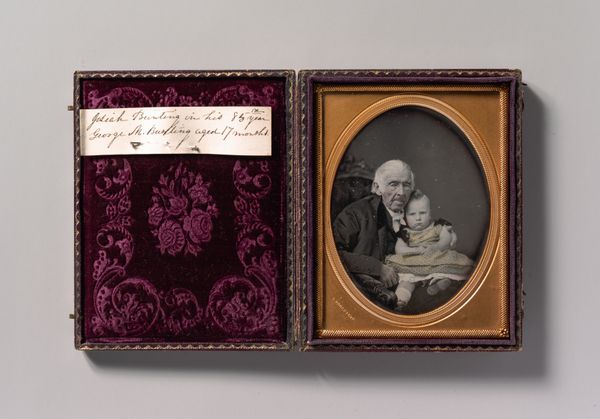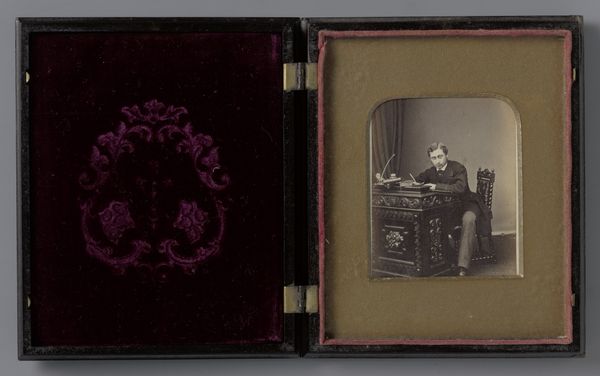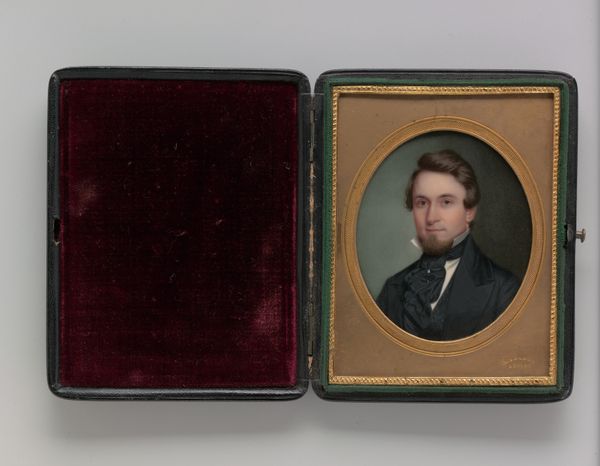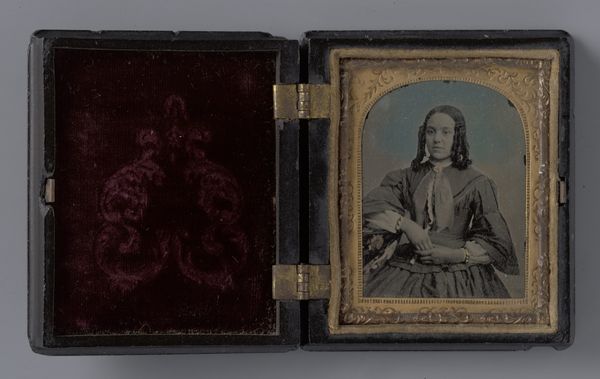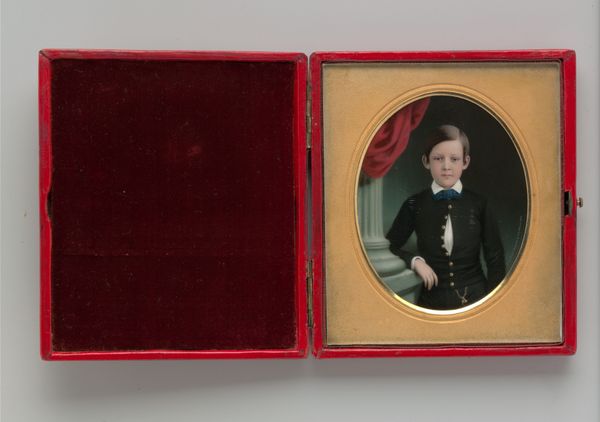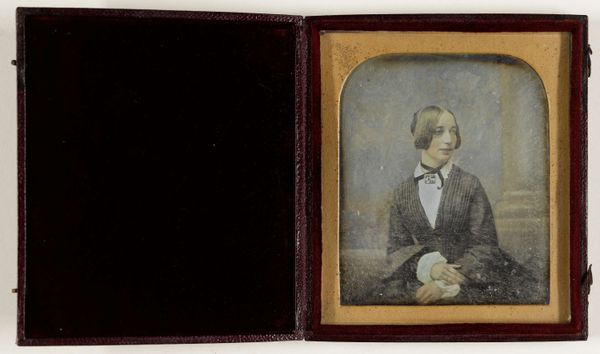
tempera, painting
#
portrait
#
tempera
#
painting
#
coloured pencil
#
romanticism
#
miniature
Dimensions: 4 5/16 x 3 9/16 in. (11 x 9 cm)
Copyright: Public Domain
Curator: Nestled in the museum's miniature portrait collection is "The Thompson Children" by John Carlin, crafted in 1846 using tempera on, what looks to me like, ivory. What strikes you first about this grouping of children? Editor: Such an exquisite, self-contained little universe. It reminds me of a locket holding secrets... slightly melancholic ones. Is it just me, or do they appear a little too serious for their age, despite their delicate features? Curator: I think you’ve hit on something vital. This was a time of tremendous artistic formality. Painted likenesses weren’t casual snapshots; they were statements about status, about posterity. Notice the restrained color palette, the meticulous detail in their clothes... these elements contribute to the sense of dignity, of curated image. Even children were staged to embody propriety. Editor: Absolutely. Those stiff postures! And that little bunch of flowers in the sister's hand...it almost feels symbolic. Flowers are such classic emblems of both life and fragility, like childhood itself. Maybe their formality, as you describe, also represents this bittersweet passage into adulthood. The window and the cloudy landscape at the back add depth. What could that scenery symbolise? Curator: Landscape is often more than just scenery, isn't it? In portraiture like this, nature becomes a mirror of the inner life or aspirations. Those soft blues and greens create a sense of distance, almost yearning. The rosy tint might suggest health or even a hopeful future. But to the point of landscape representing status; an individual with power usually has lands. Editor: Power indeed! And think of the power dynamics at play even within this small image – the slightly older brother's hand protectively (or perhaps possessively?) on the little one's shoulder. These signifiers are everywhere once we adjust our focus. And I would also say this can become something melancholic when people look to the past. Curator: Yes! The way symbols crystallise emotional undercurrents. To wrap up, this work is far more than just a visual record. It's a tender encapsulation of an era's values. Editor: I concur. It's a little poem about childhood, isn't it? Framed by loss and legacy.
Comments
No comments
Be the first to comment and join the conversation on the ultimate creative platform.
